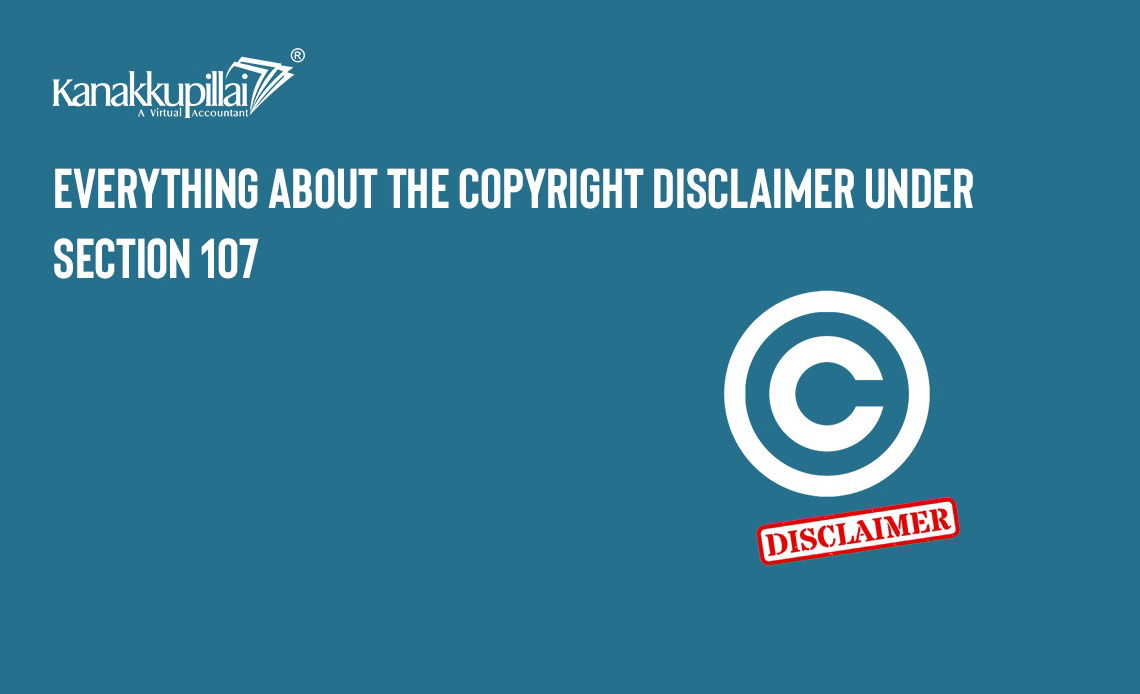Under Section 107, the copyright disclaimer underlines the use of copyrighted material for “fair use” intentions. Fair use lets one use copyrighted works for purposes like news reporting, criticism, teaching, scholarship, learning, and research. In copyright law, knowledge of fair use is essential as it enables artists to balance their rights with the need for creativity and innovation.
Types of Creative Works Protected
Copyright law shields many kinds of artistic works, such as
- Books, plays, songs, papers, and talks are examples of written works.
- Paintings and signs are examples of visual works.
- Dramatic works like plays and shows
- Audio visual works
- Musical compositions
- Sound records
The Copyright Act of 1976 protects these works and makes sure that the people who made them have the only rights to their original works.
Features of Copyright Disclaimer
A copyright statement includes several key elements to successfully protect original material and guarantee fair use:
- Clear Statement of Ownership: A short and clear statement stating the work being utilized as the owner’s.
- Citation & Attribution Requirements: A reference or tribute to the original work, praising the author’s effort and avoiding copying.
- Contact Information Inclusion: The owner’s contact information, such as an email address or website, for interested parties to get in touch for additional information.
Understanding Fair Use
To identify fair use, consider the following criteria:
- Purpose and Character of the Use: Nonprofit, educational, or personal uses are usually favoured, while business uses are less likely to be deemed fair. Transformative uses, such as criticism, comments, or humour, are preferred over mere copying.
- Nature of the Copyrighted Work: Factual works, published works, and science pieces are more likely to be considered available for fair use than artistic, imaginative, or private works.
- Amount and Substantiality of the piece Used: Using only a small piece of a work is usually chosen, but the amount used can be more substantial if it is moving and important for the purpose.
- Effect on the Potential Market for or Value of the Work: This factor considers whether the use deprives the copyright owner of income or reduces a new or potential market for the work. The more changing the use, the less important this factor becomes.
Common Misconceptions
Common misunderstandings about fair use include:
- Any educational or non-commercial use is a fair use. Fair use is not limited to educational or non-commercial uses; it depends on the specific setting and goal.
- Using 10% or less of a work is a fair use. There are no red-line rules for fair use; the amount used is just one factor to consider.
- Any change to a work is called transformative. Not all changes are transformative; a transformative work must replace the original with a new expression, meaning, or message.
- Including a reference makes a use a fair use. Citation is not a factor in fair use research; it is an academic guideline for right credit.
- Fair use only refers to paper products. Fair use applies to all types of protected works, including video, music, software, text, and pictures.
Process of Creating a Copyright Disclaimer
To make a copyright statement, take these steps:
- Identify the type of work: Determine if your work comes under the original work copyright disclaimer or the copyright disclaimer under Section 107 of the Copyright Act.
- Include the copyright symbol: Use the copyright sign (©) or options like “copyright” to show that your work is protected.
- Specify the release year: Mention the year your work was released, which is important for copyright registration.
- Name the rights holder: Clearly name the owner of the property, usually yourself or your company.
- Reserve rights: Optionally, include a note protecting the rights of the property owners.
Advantages of Including a Copyright Disclaimer
Including a copyright notice offers several benefits:
- Legal protection: It helps protect your work from theft and illegal use.
- Public notification: It clearly explains your ownership and rights to the public.
- Damage maximization: It allows you to seek damages if your work is used without permission.
- Libel claim: It offers a means to bring a libel suit if your work is used in a derogatory way.
- Prevents misuse: It deters others from using your work without permission.
Why Copyright Disclaimers Are Essential?
Copyright warnings are important for several reasons:
- Legal security for material creators: A clear copyright notice claims ownership over original material, discouraging illegal use and possible abuse. It offers a legal base for content makers to protect their intellectual property rights.
- Educating users on copyright laws: Copyright warnings educate users about the accepted uses of copyrighted material, such as fair use for review, comments, news reporting, teaching, study, and research. This helps support learning and compliance with property rules.
Conclusion
In conclusion, copyright warnings are crucial for content makers to protect their intellectual property rights and teach users about copyright laws. By knowing the features of a copyright statement, the criteria for fair use, and the process of making one, artists can effectively defend their rights and ensure compliance with copyright laws.
Related Services





